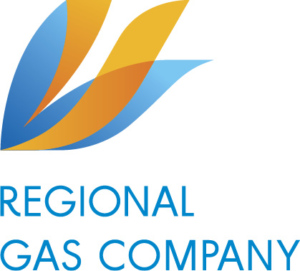Injecting hydrogen into gas grids is a ground-breaking alternative to natural gas. Tested in the United Kingdom and the Netherlands in recent years, this innovative solution is now coming to Ukraine.
This year the Regional Gas Company will start evaluating blends of hydrogen and natural gas in the country’s network. How will they behave in our pipelines? Will our clients’ equipment work correctly?
We want to take actual, real networks, albeit ones not connected to end consumers, and begin to study the behavior of hydrogen in gas pipelines. We want to find out if hydrogen can be used in the existing gas system – or what needs to happen to make that possible.
The plan is to start off nice and easy – first adding 2%, then 5%, then gradually moving up until 100% of hydrogen in the gas blend. We need to understand if and how much hydrogen can be used in our gas distribution systems, which concentrations work best, and if there are any risks for consumers.
We will start to figure all of this out in closed parts of the network by the middle of this year. Five landfills have already been selected in Ivano-Frankivsk, Dnipropetrovsk, Zhytomyr, Kharkiv and Volyn regions.
Ukraine is part of the European gas market and needs to be ready should hydrogen blends become a regular feature at European gas hubs.
That might be sooner than we think – as the last climate conference in Madrid was marked by a strong push for transitioning to a climate neutral economy and getting to zero carbon emissions by 2050. That means phasing out natural gas with such alternatives as low carbon gases, biogas and hydrogen.
Europe is looking to hydrogen because it’s a green fuel, which only produces water when burnt – no carbon monoxide or other emissions. European states, keen on reducing environmental damage, plan to provide consumers with a natural gas and hydrogen mix: a sort of “greening” of the more traditional methane.
European Commission Speaker Tim McPhee has said European infrastructure should be ready to use more “green” gases. Sooner or later that will become relevant for Ukraine, which is a member of the European Energy Community, too.
The cost of hydrogen is quite high – for now. But it’s expected to become competitive with alternatives in the next 10 years, perhaps even beating out conventional fossil fuels.
According to a Hydrogen Council report increasing hydrogen production could cause costs to drop by as much as 50% by 2030. That will require around $70 billion of investment in hydrogen technology. That might seem like a lot, but its less than 5% of annual energy costs. By comparison, just last year Germany alone invested about $30 billion in renewables.
Renewable energy sources are actually powering the rise of hydrogen. Many European countries generate excess electricity from renewable sources – whose costs can often be negative. This cheap surplus will help produce hydrogen using power-to-gas technology (through electrolysis of water).
The rise of renewables is set to keep driving down costs – University of Oxford researchers predict renewable energy will grow to some 65 to 80% by 2040. This should ensure enough hydrogen is produced.
Why is hydrogen relevant in Ukraine? Sooner or later Ukraine will need to adopt and enact European legislation on emissions. Many companies will be interested in finding ways to offset their environmental impact. Hydrogen will be one of the most attractive alternatives for them.
Last year 4.5 GW of renewable energy capacity was put into operation in Ukraine. That’s the equivalent of almost five units of a nuclear power plant.
The Ukrainian grid’s main problem is the lack of balancing capacity. Every gigawat of solar or wind power should be matched with a gigawat of gas or coal generation, which could replace “green” stations in adverse weather.
Unfortunately, this issue is not currently being addressed, so there will be peaks in electricity supply that no one will consume. Those could be used for hydrogen production in Ukraine, and with a bit of a push, they just might be.

